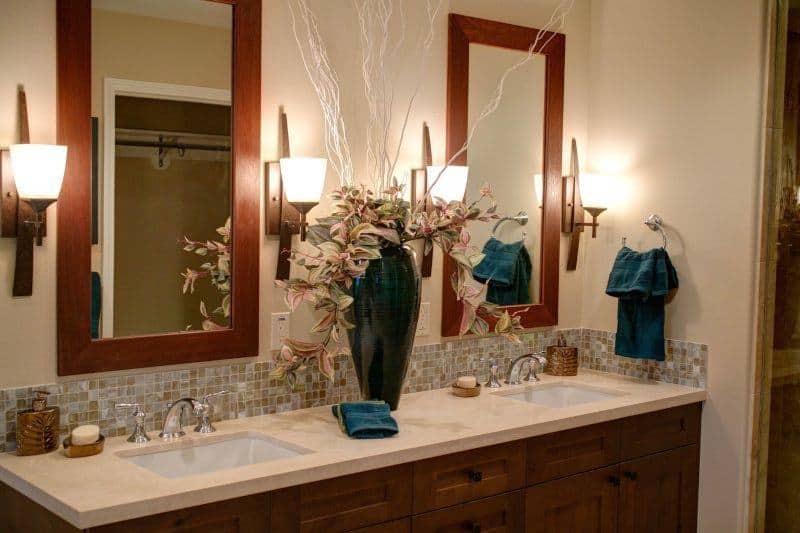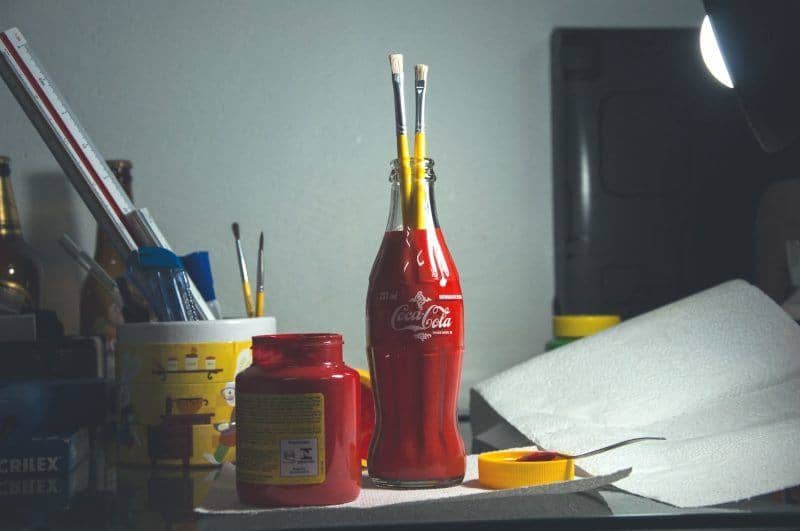For the past two decades, granite has been a popular choice of material for kitchen and bathroom countertops because of how easy it is to maintain. If the granite is well taken care of, it will last you for years without you having to worry much about its upkeep.

Though expensive, granite is a great addition to your kitchen because it can keep looking as good as it did on the first day it was installed. One of the reasons for this is that it is not as porous as other countertop materials such as marble. Hence, a granite countertop does not soak up as much spills or oils as other countertops do.
But one thing about granite countertops is that if they are not sealed with a quality granite countertop sealer, they become prone to staining. Stains could come from anything like rust, water, chemicals, oil, paint, or even ink.
The first rule in removing stains from granite counters is simple: regular cleaning. You must always wipe up spills and drips as soon as they happen so that the stain will not set on the surface. Prevention is key.
Stains can happen when liquid contaminants or dyes come in contact with your granite countertop. Once a stain sets in, it can be both puzzling and challenging to remove it. Before you start removing stains, you have to determine what kind of stain it is and how the stain got there in the first place.
Here is a simple way to find out if what you are seeing on your granite counters is just a stain or damage that needs repair. In case you are still unable to determine what it is, you should always consult a specialist.
Table of Contents
Is Your Granite Countertop Damaged?
Is Your Granite Countertop Stained?
Some stains can be a little stubborn and may not go away with the simple application of water and using a clean rag. And just for that purpose, we have for you this little guide to help you out. Let us start with the most common type of stain: water.

Removing Water Stains
This is the most common type of stain on counters and can be prevented entirely by wiping away excess water as soon as there is a spill using a clean rag or sponge. If you are unable to do so, the water will be absorbed in the granite and will appear as a stain. Although most of this will disappear as the water evaporates, there will be some telling marks to show that a stain has been there.
Water stains are one of the easiest stains to remove. All you need to do is just clean the granite countertops using soap and water.
Removing Organic Stains
Organic stains can occur because of stains from fruit, coffee, food, urine, leaves, or tobacco. These materials can leave a brownish-pink stain on your granite countertops that is quite ugly but is really easy to remove using a few simple steps
- 1Take a cotton pad and saturate it with some hydrogen peroxide. Squeeze out the excess chemical, but leave the pad wet (without dripping).
- 2If you have a really dark-colored stone, it is always better to first test this on a very small area of the countertop. You do not want to lighten the color of your granite counters.
- 3To remove the stain, apply the pad to the affected area. Seal the pad in place with some plastic tape, and leave it on for at least 24 hours.
- 4The pad will soak up the stain. If you are not satisfied with the result, you may want to repeat this process.
Removing Oil Stains
This usually happens when you leave oil containers unattended on your granite countertops for long periods. As a result, oil is absorbed and will need to be chemically removed, which may take some time.
- 1Take a bit of acetone and soak a cotton pad or a clean rag with it.
- 2Gently clean the affected area on your granite countertops and cover the area surrounding it too for good measure.
- 3If you do not have acetone, you can use a mild liquid soap instead.
- 4After wiping the area clean, let the surface dry completely.
- 5Depending on how deep the oil has penetrated, you may be required to do this more than once to remove the stain completely. Since this is an oil stain you are dealing with, this may take a little time.
- 6Keep in mind that acetone evaporates quickly. Some people recommend using nail polish remover as it also contains acetone, but it may have some other chemicals that might react with the granite surface. For this case, it is best to only use pure acetone when it comes to granite stain removal.

Removing Super Glue
As tough as it may sound, it is not very difficult to remove super glue from your granite countertops. Here are the steps.
- 1Prepare a simple solution of ordinary dishwashing soap and water. Shake well.
- 2Soak a clean cloth in this stain removal solution and lay it on the spilled glue.
- 3Let this cloth sit on the dried glue for a few hours. If you feel the cloth is drying off too fast, you can wet it again in the solution. This will soften the super glue considerably.
- 4Scrub the residual glue away. If you feel some resistance, you can use a little rubbing alcohol to do this.
- 5Use another damp cloth to remove the glue completely.
Removing Metal Stains
Metal stains will appear if you have left out metal containers on your granite countertop and rusting occurs. These stains appear reddish-brown in color (sometimes, they might be green as well). Metal stains will require the same poultice method that we used in the removal of organic stains. Here are the steps:
- 1Create a thick paste using ordinary talcum or chalk powder. Use it in equal parts so a thick paste is formed.
- 2Apply this paste to the affected area on your granite countertops and make sure to cover the stain entirely.
- 3Cover the stained area with a plastic wrap. Tape it down (using adhesive tape) and let it dry for approximately 24 hours.
- 4Once 24 hours have passed, remove just the plastic tape and wrap. Leave the paste in place. Let this sit on the stain and allow it to become completely dry. This may take a while.
- 5Once you are sure the poultice has dried off completely, you will need a scraper (or a blunt object) to scrape the poultice away from the granite surface.
- 6Remove any remaining material on the surface using a clean cloth.
- 7Wash the area like you normally would, with clean water and a clean rag, and dry it completely.
- 8This process may take a few more tries (as many as four to five tries) before the oil stain is gone completely. Be patient and watch the stain disappear gradually with each application.
Removing Paint Stains
Usually, paint will not leave lasting stains on your granite surface. If the paint has spilled or dried, it can simply be scraped off using a plastic scraper or by carefully using an object with an edge. You may need a commercial paint stripper if there has been a heavy spill.
In this situation, be careful of what you use; if the product contains lye, there is a chance it may cause some etching. Always read the manufacturer’s note on the back of the container. Always make sure to clean the granite countertops thoroughly afterwards with plain water. Make sure you have a few windows open and wear eye and hand protection while doing this.

Conclusion
By now, you are aware there's more than one method of granite stain removal for your countertops. For the stain removal methods that require a poultice, remember that sometimes it may take up to 48 hours for it to dry completely before you can start removing it.
You can actually prevent this whole stain removal ordeal entirely by using a high-quality sealer on your granite counters. Sealing provides an additional layer of protection so that that the countertops will not absorb spills right away. If stains occur, the stain will just be on the sealing layer and not the granite itself. This way, your countertops get cleaned easier and you do not have to worry about permanent damage.
Remember that even with regular cleaning, you still should seal your granite countertop every couple of years to keep it in tip top, polished shape.

